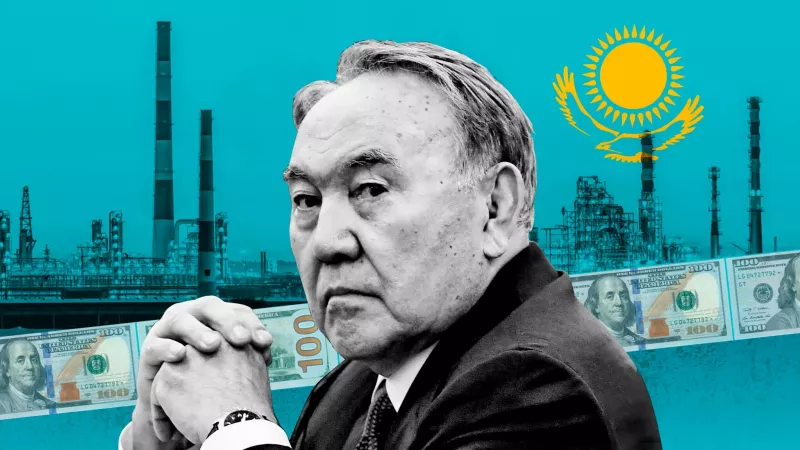
The turmoil in Kazakhstan that has cost at least 160 lives and seen Russian troops on the country’s streets was a quarter of a century in the making.
On November 21, 1995, James Giffen, an American businessman, began to wire tens of millions of dollars to a Swiss bank account. According to US prosecutors, Giffen was acting as a middleman and had received the millions from Mobil, the US oil company that was negotiating to buy a Kazakh oilfield.
Only five years earlier, Kazakhstan had been part of the Soviet empire, its oil and valuable minerals under communist control. Now Nursultan Nazarbayev, who had risen from a job in a metalworks’ furnace to become a top Communist party boss, was in charge. He could sign over rights to crude worth tens of billions of dollars to private businesses with a stroke of his pen. He only needed to be persuaded.
The Swiss payments marked the moment that Kazakhstan’s rulers found they could make serious money — fortunes that would help them maintain power through long years of rigged elections and political repression.
When US prosecutors later charged Giffen in 2004 with violating anti-corruption law, they revealed that the true beneficiary of the Swiss bank account, controlled via a web of front companies, was Nazarbayev. According to the indictment, Nazarbayev used $45,000 of this illicit income to pay fees at the exclusive Swiss school attended by one of his daughters.
Nazarbayev was initially rattled by the discovery of the payments. He asked Dick Cheney, then US vice-president, to help ease his legal troubles, but in vain. In the end, he got lucky. Giffen’s lawyers claimed that the CIA had been aware of the payments he was making. Legal wrangling over that claim dragged the case out for years, until prosecutors settled for what they could get. They dropped the corruption charges and Giffen pleaded guilty to tax offences, paying a modest fine.
Nazarbayev’s luck held until last month. For 29 years as president, then two more as the power behind his chosen successor Kassym-Jomart Tokayev, he built what Tom Mayne, a leading Kazakhstan expert based at the University of Exeter, describes as “one of the strongest examples of a modern kleptocracy”.

Dissidents, experts and businesspeople say Nazarbayev himself came to bestride the resource-rich economy, while former regime insiders have accused him of holding interests in everything from aluminium to banking.
KPMG has calculated that 162 people — or 0.001 per cent of the 19m population — own 55 per cent of Kazakhstan’s wealth. Many of those are connected to the president by blood or business dealings.
Nazarbayev has become a symbol of a certain kind of post-Soviet regime which ruthlessly stifles dissent at home while the ruling clique has been able to shift billions abroad and retain the world’s finest lawyers and lobbyists to craft a veneer of legitimacy. In 2019, the capital city was renamed Nur-Sultan in his honour.
But his own place in that system is now under threat. A jump in the regulated fuel price triggered nationwide protests at the start of January that soon became demands for broader political and social change; many of the demonstrators shouted “Old man out!”, in reference to the 81-year-old autocrat. They were met with violence from the authorities. An official tally briefly made public said 162 people have died, a total activists say is a major underestimate.
Nazarbayev has given up his influential position as head of the country’s security council. One close aide has been arrested. There have been conflicting news reports suggesting that the position of one of Nazarbayev’s relatives at a security agency is in doubt. Another has been implicated in the unrest. His spokesperson has denied reports that he has fled the country.
President Vladimir Putin claimed that the risk of a new “colour” revolution in Russia’s largest satellite state necessitated the deployment of “peacekeepers” to defend the status quo, who are now expected to leave next week.
But after initial speculation that his regime would be swept aside by the events, the real impact on Nazarbayev and his allies is now looking less clear-cut. The leaderless protests have showed little sign of turning into anything so transformative as a “colour” revolution. Instead, the struggle that will set Kazakhstan’s course is within the regime itself.
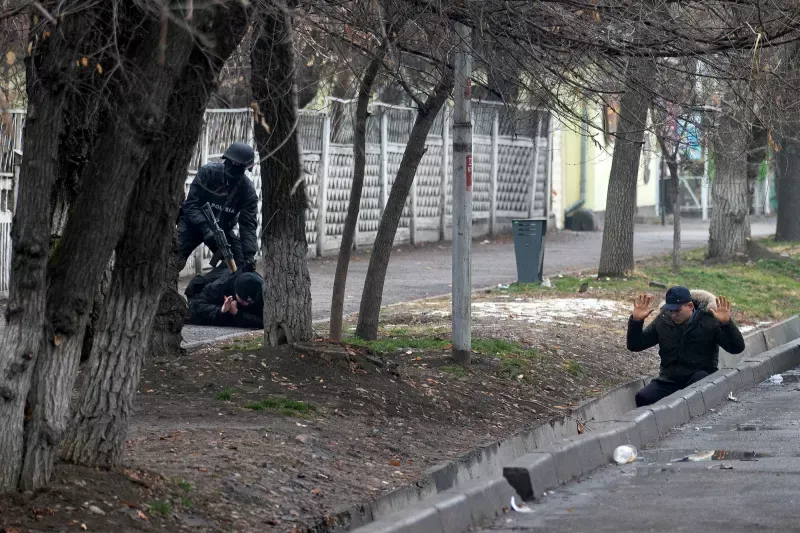
Internal power struggles
The post-Soviet country that Nazarbayev took charge of enjoyed vast mineral reserves. Kazakhstan is the world’s largest producer of uranium, producing at least 40 per cent of the global supply, and has significant deposits of copper, and zinc. The $170bn economy also has the 12th largest oil reserves in the world — just behind the US.
With rare exceptions, such as the Mobil scandal, few firm details of Nazarbayev’s financial affairs have come to light.
That is perhaps unsurprising when, as a due diligence exercise on Kazakhstan for the Swedish telecoms company Tele2 discovered, its rulers “use trusted representatives to hold their assets”. A recent report by Chatham House described how one of Nazarbayev’s friends received, free of charge, an interest in the copper industry worth £135m.
Some of the secrets about the inner workings of the Kazakh economy that have spilled into the open have come from internal power struggles. The most spectacular involved Rakhat Aliyev. A trained surgeon with a maniacal giggle, Aliyev was known as Sugar, after one of the industries he seized for himself following his marriage to Nazarbayev’s eldest daughter, Dariga.
After falling out with Nazarbayev, he was banished to Austria, where he would end up dead in a prison cell, where he was awaiting trial on murder charges, with a noose around his neck. But before that, he provided a detailed description of the business empire his father-in-law presided over. He gave an interview in which he alleged Nazarbayev “routinely” took illicit commissions on business deals, held hidden stakes in the mining and oil industries, and maintained “a network of offshore bank accounts”.

Nazarbayev did not respond to a request for comment sent to his spokesman for this article.
Another fallen baron of the regime to accuse Nazarbayev of corruption is Mukhtar Ablyazov. The diminutive physics graduate, who made his fortune in the capitalist free-for-all of the 1990s, fell out with the dictator and sought sanctuary in the UK in 2009. The Kazakh authorities accused him of looting the bank he owned, BTA, triggering a legal fight in the UK courts. Ablyazov claimed in a 2010 witness statement that Nazarbayev had turned on him because he had refused to give the president a clandestine stake in his bank.
In that statement, Ablyazov, who was himself rebuked for “deviousness” by a UK judge for failing to disclose his own assets, described how Kazakh businessmen sought to hide their ownership offshore, so that “Nazarbayev and his coterie of kleptocrats cannot simply seize them”. Ablyazov added: “He has now moved up from petty strong-arming of individuals, and instead wants to own and control the whole Kazakhstan economy”.
Ablyazov has become a prominent public critic of Nazarbayev. “He has an absolute monopoly on power, which has led to a monopoly in the economy. He essentially ate the entire economy of the country”, Ablyazov told the FT last week. “That’s why there was a single political slogan across the country in the recent protests. They didn’t ask for pasta, they didn’t ask for salary, they wanted the Nazarbayev regime out”.
One of Nazarbayev’s constant preoccupations appears to have been how to share the opportunities of Kazakhstan’s vast natural wealth without empowering potential rivals.
One solution was to tolerate the success of people who came from other countries and so could never hope to rule. That, says a former senior Kazakh official who worked with Nazarbayev, may be one reason why Nazarbayev allowed three oligarchs known as “the Trio” to prosper.
They became billionaires after acquiring mining interests in the privatisations Nazarbayev oversaw after the end of communism. But having been born elsewhere in the Soviet Union, it was unlikely they could convert that wealth into political careers.
During his time in power, members of Nazarbayev’s family have also become extremely wealthy. According to Forbes, Nazarbayev’s middle daughter Dinara and her husband Timur Kulibayev have each amassed a fortune of $3bn. They own Kazakhstan’s biggest bank, Halyk Bank. Kulibayev has become an extremely influential figure in the country’s energy industry. Since 2011, he has also sat on the board of Gazprom, the Russian state gas group.
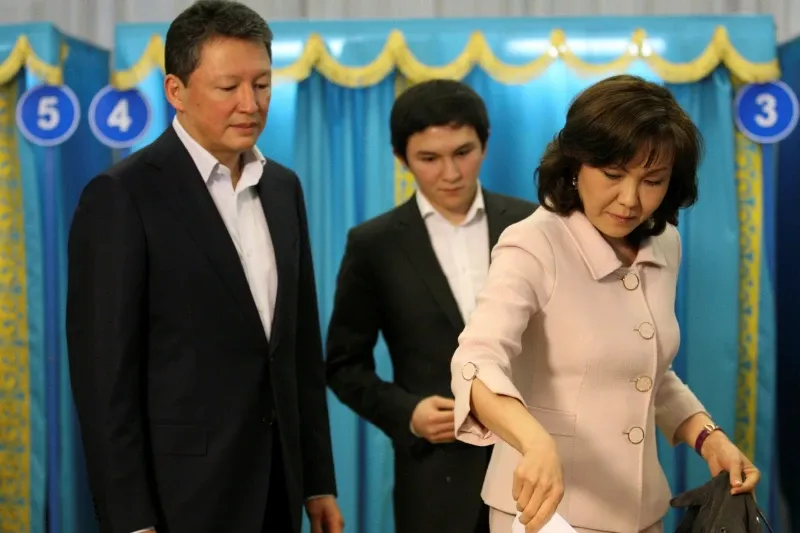
Periodic protests
Kulibayev was among the targets of political anger a decade ago during a previous explosion of protests against the regime.
In 2011, oil workers went on strike demanding better pay and conditions and criticising corruption. At Zhanaozen, a rugged town on the weather-blasted steppe, a few hundred maintained a vigil for months until the regime’s security forces opened fire on them. A dozen died.
To extract confessions for use in show trials at which the strikers themselves would be blamed for the unrest, many more were tortured. One woman, who continued to resist after her hair was ripped out, broke when her interrogators threatened to rape her teenage daughter, witnesses say. According to testimony gathered by Human Rights Watch, those forced to squat in freezing water included a grandfather who received a beating so savage that he died four days later.
Kulibayev at the time was running the country’s sovereign wealth fund, whose assets included the state oil company where the strikers worked. Farrer & Co, a UK law firm Kulibayev retained, told the FT in 2019 that he “did not support or sanction the excessive use of force against the protesters”. He had, however, become one of the focal points of the protests after he was reported to have made disparaging comments about strikers. In the aftermath of the bloodshed, Nazarbayev removed his son-in-law as head of the sovereign wealth fund.
Ten years on from the massacre, Zhanaozen was the first place to rise up on January 2 against an overnight doubling of domestic gas prices. As the protests spread around the country over the past 10 days, they focused increasingly on Nazarbayev. In one town, they tore down a statue of the former president. In Almaty, the country’s biggest city, protesters set fire to the presidential residence.
Nazarbayev has never permitted free elections. In 2015, the last time he stood, the official result gave him 97 per cent of the votes for president. As in Soviet times, for Kazakhs wishing to express their will, the absence of political routes has left only the street. Kazakhs who have witnessed this month’s protests say criminal groups have injected an element of violence. That has granted Tokayev, appointed as a seemingly puppet president by Nazarbayev in 2019, the pretext to crack down and summon Russian troops to shore up his rule.
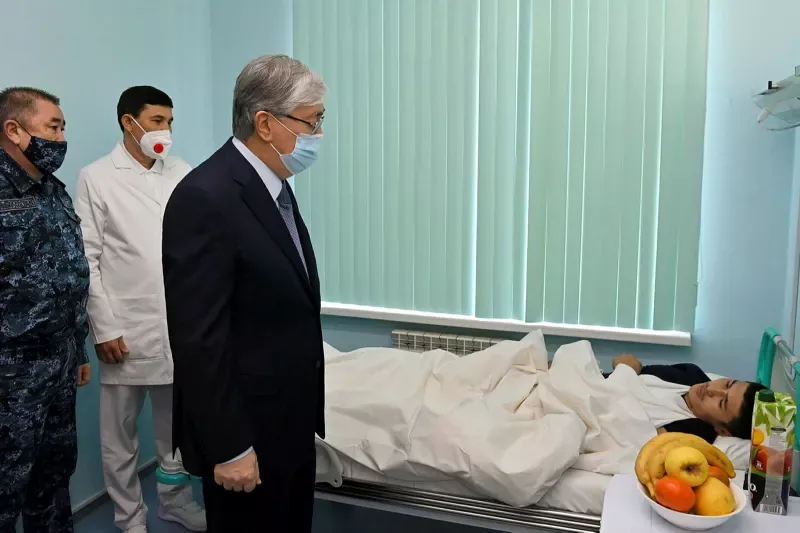
If Tokayev now follows the playbook used recently by Xi Jinping in China or Mohammed bin Salman in Saudi Arabia, those regarded as Nazarbayev’s allies can expect a purge dressed up as an anti-corruption campaign. But that would require him to have gained unrivalled authority, and it is far from clear that he has done so.
There has been no mass round-up of Nazarbayev’s people. The most dramatic defenestration of a Nazarbayev loyalist so far has been the removal of Karim Massimov as head of the KNB, the renamed but still feared successor to the KGB. He has been arrested on suspicion of treason. Massimov twice served as Nazarbayev’s prime minister and was described in a leaked 2010 US diplomatic cable as one of the four “most powerful gatekeepers” to the leader.
But Kazakh-watchers regard him as lacking an independent power base beyond the favour of Nazarbayev, rendering him more vulnerable than other senior regime figures and family members.
“The Nazarbayev grouping is very diverse and very broad — some of them will cut deals with Tokayev to stay inside the tent, and others may be arrested”, says Simon Glancy, managing partner at Strategic Solutions, an Almaty-based consultancy.
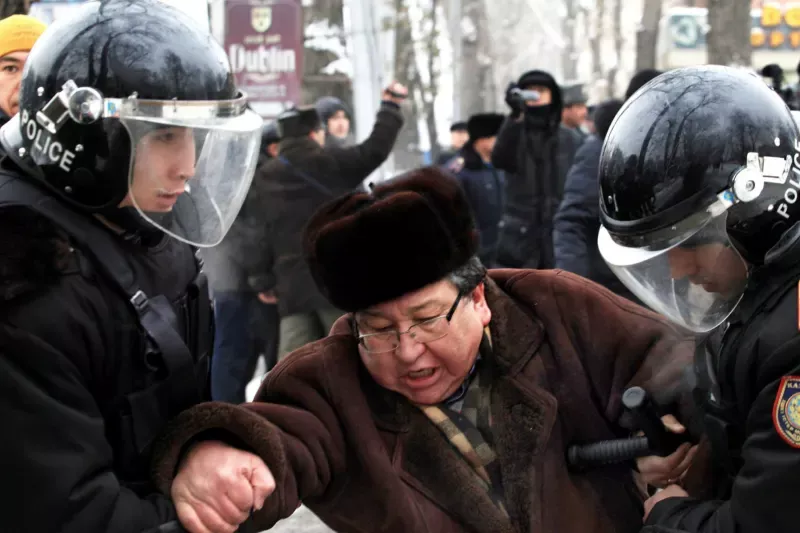
Among the secrets Nazarbayev’s doomed son-in-law Aliyev revealed was what he said was a psychological assessment of the dictator produced by the spies at the KNB. “Those who agree with and accept his opinions and stick to the rules are in ‘his’ group”, the purported assessment went. “Anyone who does not accept his opinion is one of the ‘others’ and thus an enemy”. Massimov has discovered how quickly insiders can become outsiders. Among the main questions now is whether any of the oligarchs who reign over Kazakhstan’s economy could suffer similar fates.
The Kazakh authorities have routinely used foreign commercial courts to target those expelled from the ruler’s court, accusing them of the kind of corruption that the regime itself presides over. If the government seeks to distance itself from the old order by airing some of its secrets, that could embarrass some of the political consultants, lawyers, lobbyists, private spies and PR specialists who have profited in the past from Kazakhstan’s lavish spending on their services.
So successful has Nazarbayev’s regime been at hollowing out civil society and hounding his enemies abroad that the protests have thrown up no leaders of national stature. As a result, says a former intelligence officer in the region, the likely upshot is a “redistribution” of wealth among the ruling few. The ex-spy and others who know the regime believe that, even if some of the chief beneficiaries change, the system Nazarbayev spent a generation building looks likely to endure after he is gone.
By Tom Burgis and Nastassia Astrasheuskaya.
